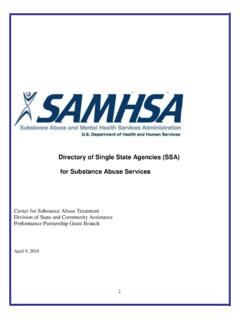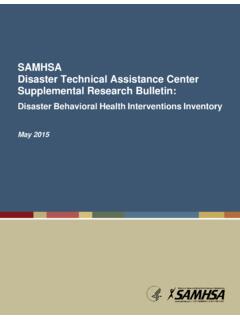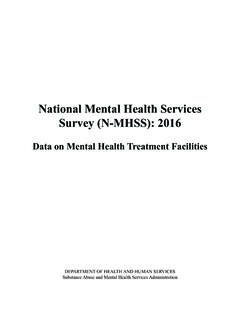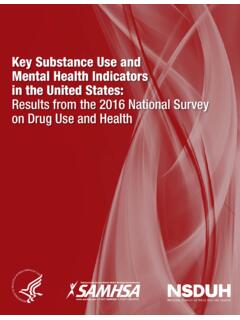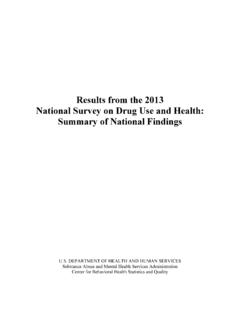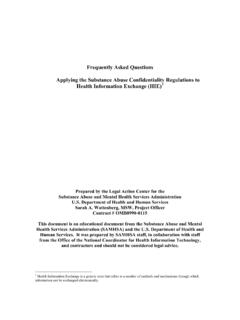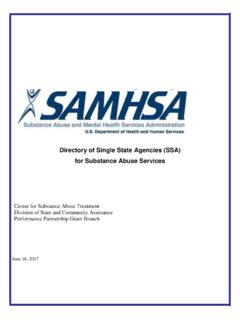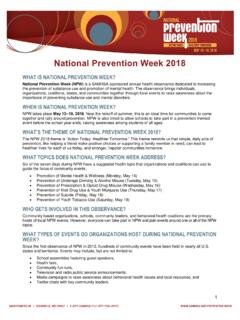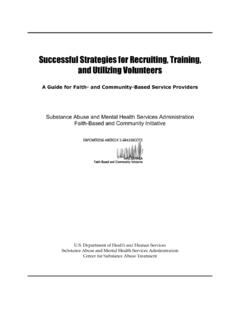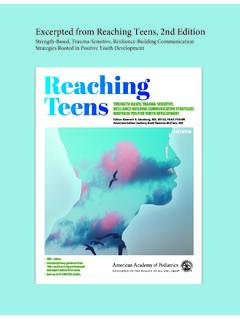Transcription of Creating, Supporting, and Sustaining Trauma-Informed …
1 1 BACKGROUND AND OVERVIEWThe primary mission for schools is to support students in educational achieve-ment. To reach this goal, we know that children must feel safe, supported, and ready to learn. As schools strive to accomplish this for all students regardless of strengths, needs, and capacities schools must recognize the influence of the students personal experiences on their learning and achievement. Children are exposed to violence and trauma at an alarming rate in the United States. By age sixteen, two-thirds of children in the United States have experienced a potentially traumatic event such as physical or sexual abuse, natural disaster or terrorism, sudden or violent loss of a loved one, refugee and war experiences, serious accident or life-threatening illness, or military fam-ily-related stress.
2 Many children, with support, are able to heal and overcome such traumatic experiences. However, a recent report examining the impact of adverse childhood experiences (ACEs) on academic outcomes found that communities with higher ACE scores had higher rates of suspension and unexcused absences and lower rates of graduation from high school and progression to post-secondary school than communities with relatively low prevalence of Not only are individual children affected by traumatic experiences, but other students, the adults on campus, and their communities can be impacted by interacting or working with a child who has experienced trauma . Thus, as schools maintain their critical focus on education and achievement, they must also acknowledge that mental health and wellness are integrally connected to students success in the classroom and to a thriving school environment.
3 This framework illustrates why becoming Trauma-Informed should be an essential component of the overall mission of our education system. Creating, Supporting, and Sustaining Trauma-Informed Schools: A System FrameworkThis framework will help schools and sites who partner with schools have a better sense of the areas to address when working towards a more Trauma-Informed 1 What Does It Mean to Be Trauma-Informed ? In order to create, support, and sustain these elements specifically in schools, a tiered approach is suggested to create an envi-ronment with clear expectations for everyone, open communication, and a collective commitment to a safe and nurturing school culture. The tiered approach describes how Trauma-Informed practices can be applied both universally as a preventative approach and to help those in need of more intensive support.
4 The aim of a Trauma-Informed tiered approach is to create a school-wide environment that addresses the needs of all students, staff, administrators, and families who might be at risk for experiencing traumatic stress symptoms. There are many ways to weave Trauma-Informed approaches into the fabric of schools, including strategic planning by administrators, approving Trauma-Informed policies, staff training, direct intervention with traumatized stu-dents, and building knowledge and communication in a variety of domains, all with a focus on creating and supporting academic achievement, behavioral competence, and mental health of all students, families, and staff. 2 The ChallengesWhile healing from trauma and loss exposure is possible with the appropriate level of support, before these supports are present many students may experience a range of reactions including behavioral changes, emotional distress, grief, diffi-culties with attention, academic failure, nightmares, or illness.
5 These reactions sometimes develop into psychiatric disorders, including posttraumatic stress dis-order (PTSD), anxiety, and It is critical to highlight that even when a traumatic event does not result in clinical symptoms/behaviors consistent with traumatic stress, it can have a serious impact on the developmental trajectory of a youth across all major domains of functioning ( , physical/health, cognitive/learning, behavioral, social/emotional). trauma and traumatic stress reactions such as the symptoms and behaviors de-scribed above can disrupt the school routine and the processes related to teach-ing and learning not only for the child who experienced the event, but also for his or her peers, classroom environment, teachers, as well as staff.
6 The ability to read, write, solve math problems, and engage in discussion requires attention, organi-zation, comprehension, memory, the ability to produce work, engage in learning, and trust. These activities also require students to have the capability to regulate their own attention, emotions, and Students traumatized by exposure to violence are at increased risk for displaying emotional dysregulation, disruptive behaviors, declines in attendance and grade point averages, and more negative remarks in their cumulative records than other students. They may have increased difficulties concentrating and learning and may engage in unusually reckless or aggressive It is important to note that recent research highlights the unique impact of grief and loss when youth are exposed to traumatic events.
7 Grief and loss reactions can heighten traumatic stress reactions and worsen symptoms such as feeling disconnected from others, strong negative reactions to relationships, and general disengagement from National Child Traumatic Stress Network (NCTSN) defines all Trauma-Informed child- and family-service systems asone in which all parties involved recognize and respond to the impact of traumatic stress on those who have contact with the system including children, caregivers, staff, and service pro-viders. Programs and agencies within such a system infuse and sustain trauma awareness, knowledge, and skills into their organizational cultures, practices, and policies. They act in collaboration with all those who are involved with the child, using the best available science, to maximize physical and psychological safety, facilitate the recovery or adjustment of the child and family, and support their ability to thrive.
8 3 Repeated childhood exposure to traumatic events can affect the developing brain and nervous system, such that the brain is more easily triggered into survival mode even when there is no actual danger present. When areas of the brain associated with survival are triggered and highly activated, the thinking and learning areas of the brain are bypassed and largely go offline. Further, expo-sure to chronic trauma is associated with an increase in health-risk behaviors such as smoking, eating disorders, substance use, and high-risk sexual behaviors leading to teen pregnancy and sexually transmitted In the classroom, behaviors result-ing from exposure to trauma can lead to reduced instructional time, suspensions, and expulsions.
9 Long-term results of exposure to violence include reduced graduation rates, along with increased incidences of teen pregnancy, joblessness, and School environments that do not recognize when externalizing behaviors and emotional dysregulation of a student are a result of trauma and loss may respond in a punitive and potentially harmful way. Students who have been exposed to trauma are at increased risk of receiving out-of-school Historically, schools and districts have responded to a broad range of student behaviors by implementing zero tolerance policies, resulting in suspensions and expulsions for drug use and violence as well as minor infractions such as willful defiance. Although zero tolerance policies are aimed at improving safety on school campuses, unintended consequences can result such as greater school dropout and justice system involvement of those who are suspended or expelled from school.
10 Out-of-school discipline also disproportionately affects African American students, who are four times more likely than their White peers to be suspended, a trend that begins in preschool. Schools may also inappropriately respond to defiant behavior by relying on a show of force by Collectively, these well-intentioned policies and practices can undermine feelings of safety for students impacted by trauma and inadvertently contribute to a school climate counter to many principles of a Trauma-Informed approach. 3 The OpportunitiesTraumatic stress can arise from a variety of sources, both internal to the school environ-ment and external, such as bullying, school shootings, dramatic weather events, com-munity or domestic violence, grief due to loss of a loved one, and even the day-to-day exposure to events such as divorce, poverty, homelessness, abuse and/or neglect.
